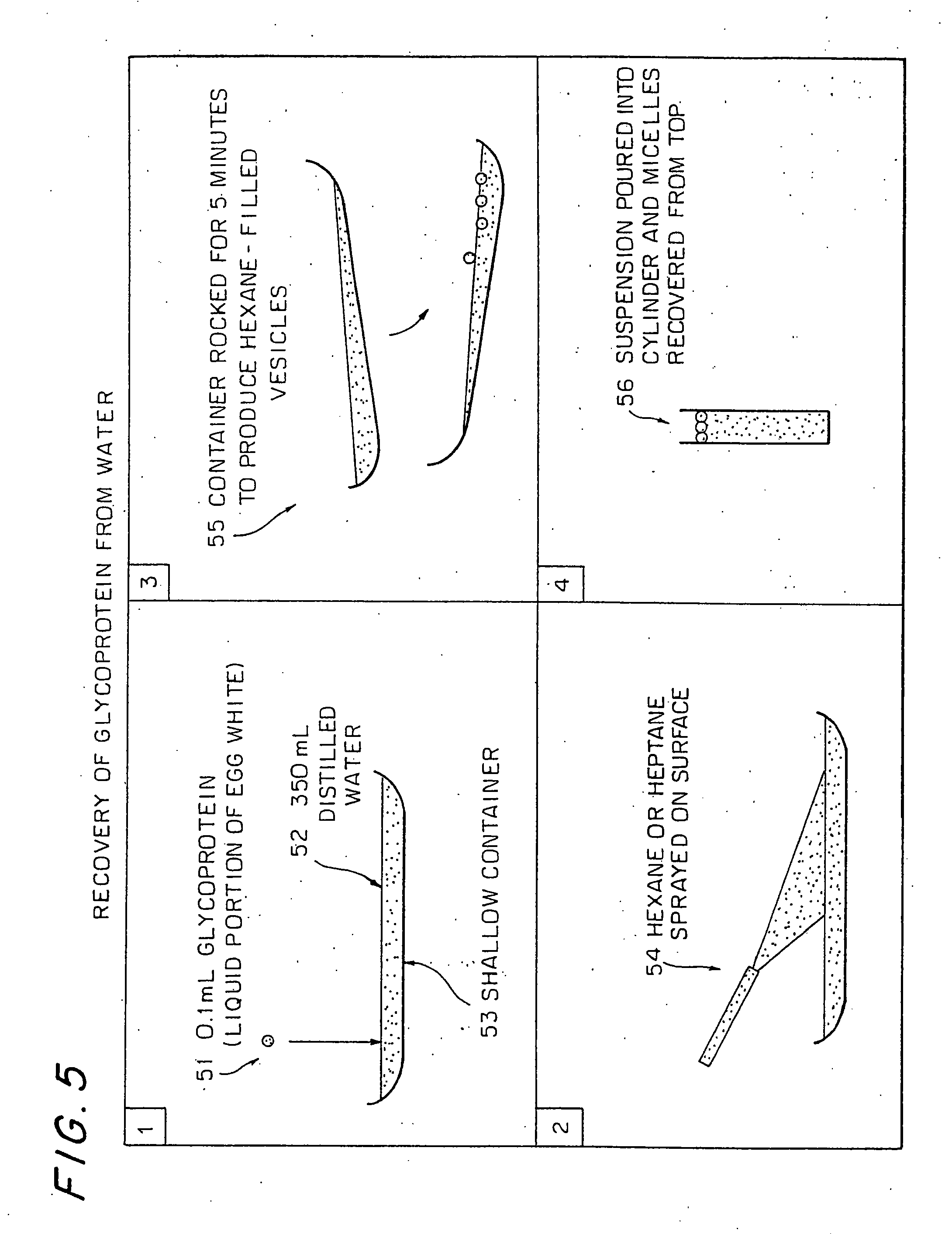Sequestering Of Glycoprotein Molecules and Oligosaccharide Moieties In Lipo-Glycoprotein Membranes and Micelles
a glycoprotein and membrane technology, applied in the field of protein separation, can solve the problems of oxidation, chemical and mechanical instability of these constructs, etc., and achieve the effects of preventing aggregation and fusion of micelles, and facilitating the rehydration of dried micelles
- Summary
- Abstract
- Description
- Claims
- Application Information
AI Technical Summary
Benefits of technology
Problems solved by technology
Method used
Image
Examples
examples
Lifting Membrane from Solution
[0070] Peanut oil and turmeric were mixed and allowed to rest overnight. A few drops of bright yellow-stained oil were decanted and sprinkled on top of a pink solution containing 5 ml liquid egg white, 30 ml distilled water, and water-soluble McCormick food coloring. A toothpick was used to drag the oil droplets into a pattern. White filter paper was then carefully pressed onto the entire surface of the fluid. The paper was removed and examined. The area that had contacted the aqueous solution was pink. Where the paper had contacted oil, distinct orange swirls reproduced the pattern produced by the toothpick. A drop of turmeric-stained yellow oil was then placed on a corner of the paper that had not contacted any colored fluid. The paper was then washed in liquid detergent and examined again. The pink color had disappeared. An indistinct, pale yellow dot remained in the corner. However, where a membrane had been present, orange swirls remained distinc...
PUM
| Property | Measurement | Unit |
|---|---|---|
| pH | aaaaa | aaaaa |
| diameter | aaaaa | aaaaa |
| diameter | aaaaa | aaaaa |
Abstract
Description
Claims
Application Information
 Login to View More
Login to View More - R&D
- Intellectual Property
- Life Sciences
- Materials
- Tech Scout
- Unparalleled Data Quality
- Higher Quality Content
- 60% Fewer Hallucinations
Browse by: Latest US Patents, China's latest patents, Technical Efficacy Thesaurus, Application Domain, Technology Topic, Popular Technical Reports.
© 2025 PatSnap. All rights reserved.Legal|Privacy policy|Modern Slavery Act Transparency Statement|Sitemap|About US| Contact US: help@patsnap.com



